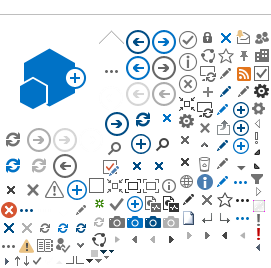| 1726 | PURESBio - Prozessverständnis und Nutzung von Pflanzenrückständen für eine nachhaltige Produktion von Pflanzenbiomasse, Arbeitspaket 7: Ableitung von Nutzungsempfehlungen für Reststoffe | PURESBio - Process understanding and usage of residues for sustainable plant biomass production. Workpackage 7, determination of reccomendations for residues use | 01/08/2014 00:00:00 | 31/03/2018 00:00:00 | abgeschlossen | completed | Leibniz-Zentrum für Agrarlandschaftsforschung (ZALF) e. V. | Leibniz Centre for Agricultural Landscape Research (ZALF) | x0x63x25x | Wurbs, Angelika; Lana, Marcos | x302x1081x | <div class='ntm_ZAL'>ZAL</div> | | | 2014 | PURESBio - Prozessverständnis und Nutzung von Pflanzenrückständen für eine nachhaltige Produktion von Pflanzenbiomasse, Arbeitspaket 7: Ableitung von Nutzungsempfehlungen für Reststoffe PURESBio - Process understanding and usage of residues for sustainable plant biomass production. Workpackage 7, determination of reccomendations for residues use Leibniz-Zentrum für Agrarlandschaftsforschung (ZALF) e. V. Wurbs, Angelika; Lana, Marcos Drittmittel Leibniz Centre for Agricultural Landscape Research (ZALF) completed abgeschlossen <div class="ExternalClass25CEABD0C56D4FB2AFF1E139A3099979">Das Potenzial der Verwertung organischer Reststoffe aus der landwirtschaftlichen Produktion für die Aufwertung von landwirtschaftlichen, insbesondere marginalen Standorten (d.h. ertragsschwache, nährstoffarme und mit geringem Humusanteil) zur Steigerung der Flächenproduktivität.</div> <div class="ExternalClassDA827A8FE46C44FB8A38BC96FA489EFF">Assess the potential of organic residues from sugar-cane production in the agricultural nutrient management, especially in marginal soils (low productive, nutrient poor and with low levels of soil organic matter), for improvement of field productivity.</div> BMBF3 PURESBio <div class="ExternalClass409BF2A3-E4EB-4CF5-A2DE-5E8294DDAF9F"><ul><li>2017 Landnutzung und Wirkungen</li></ul></div> <div class="ExternalClass1C7A1817-B328-4E1F-AB88-6EB4816AF9F9"><ul><li>CTBE - Brazilian Bioethanol Science and Technology Laboratory</li><li>Embrapa Temperate Agriculture</li><li>Forschungszentrum Jülich</li><li>IFG - Federal Institute of Goiás, Campus Goiânia</li><li>UFG - Federal University of Goiás, Agronomy Department </li></ul></div> <div class="ExternalClass7C79DB89-04DC-45CB-AAE7-1C04ED0215C5"><ul><li>BMBF-Verbundprojekte</li></ul></div> <div class="ExternalClassF764E392-35E2-47E3-8D5D-EA2E0192CB8F"><ul><li>Projektträger Jülich (BMBF-Förderung)</li></ul></div> <div class="ExternalClassA5705364-8ED8-4760-AA7E-29984AE1E59D"></div> | <div class="ExternalClass25CEABD0C56D4FB2AFF1E139A3099979">Das Potenzial der Verwertung organischer Reststoffe aus der landwirtschaftlichen Produktion für die Aufwertung von landwirtschaftlichen, insbesondere marginalen Standorten (d.h. ertragsschwache, nährstoffarme und mit geringem Humusanteil) zur Steigerung der Flächenproduktivität.</div> | <div class="ExternalClassDA827A8FE46C44FB8A38BC96FA489EFF">Assess the potential of organic residues from sugar-cane production in the agricultural nutrient management, especially in marginal soils (low productive, nutrient poor and with low levels of soil organic matter), for improvement of field productivity.</div> | <div class="ExternalClassE50AB45C-D6EB-45DA-9D25-9C24310CCF4F"><ul><li>Inst. für Landnutzungssysteme</li><li>Inst. für Landschaftssystemanalyse</li></ul></div> | <div class="ExternalClass99496FA5-8CF4-4E55-8A6D-DA321AE80661"><ul><li>Inst. of Land Use Systems</li><li>Inst. of Landscape Systems Analysis</li></ul></div> | <div class="ExternalClassC5DAEF7A-6876-4716-B600-0A056A54220A">Dr. Marcos Lana; Dr. Angelika Wurbs</div> | Wurbs, Angelika | <div class="ExternalClassD5A7EFD2-CEF8-46CA-94E3-C3F73EB2BD81">Dr. Angelika Wurbs</a></div> | <div class="ExternalClass409BF2A3-E4EB-4CF5-A2DE-5E8294DDAF9F"><ul><li>2017 Landnutzung und Wirkungen</li></ul></div> | <div class="ExternalClassDB3ECCB9-F6DA-498B-99D7-67974BA6AACB"><ul><li>2017 Land Use and Impacts</li></ul></div> | x263x | <div class="ExternalClass1C7A1817-B328-4E1F-AB88-6EB4816AF9F9"><ul><li>CTBE - Brazilian Bioethanol Science and Technology Laboratory</li><li>Embrapa Temperate Agriculture</li><li>Forschungszentrum Jülich</li><li>IFG - Federal Institute of Goiás, Campus Goiânia</li><li>UFG - Federal University of Goiás, Agronomy Department </li></ul></div> | x2222x2223x1339x2225x2227x | <div class="ExternalClass7C79DB89-04DC-45CB-AAE7-1C04ED0215C5"><ul><li>BMBF-Verbundprojekte</li></ul></div> | | Projektträger Jülich (BMBF-Förderung) | <div class="ExternalClassF764E392-35E2-47E3-8D5D-EA2E0192CB8F"><ul><li>Projektträger Jülich (BMBF-Förderung)</li></ul></div> | | 3 | 3 | | <div class="ExternalClass0BC11E3E-C34A-49EE-ACCE-36FF0499F1CA"><ul><li>PB3-Leitung (Leitung, Administration und Sekretariat)</li><li>Nachhaltige Landnutzung in Entwicklungsländern</li></ul></div> | <div class="ExternalClass4571D730-219C-483D-A0ED-8C0468563B06"><ul><li>Head of RA3 (head, administrative manager and secretariat)</li><li>Sustainable Land Use in Developing Countries</li></ul></div> |
